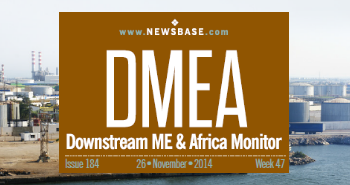DMEA: Fuel and pipes for Kuwait, Kenya

In DMEA this week, we look at Kuwait’s plans to expand its network of fuel stations and the next phase in Kenya’s massive infrastructure project.
Downstream-focused Kuwait National Petroleum Co. (KNPC) is set to build 15 new fuel stations under the second phase of a wider plan to add a total of 100 as it seeks to match the country’s urban expansion.
Industry sources were quoted in the local Arabic-language Al-Anba daily as saying that the company has now completed all preparation work including engineering designs as well as obtaining approval from government agencies. Even then, the 15 new stations are not anticipated to become operational until Q4 2025.
The progress follows the completion and opening in December of 18 new fuel stations under the project’s first phase. A further 25 stations are covered by phase three, with 16 in phase 4 and the final phase covering 26 new stations. The wider expansion programme is seen reaching completion in Q4 2027.
It comes as KNPC is set to benefit from increased availability for locally processed petroleum products following the completion of the Clean Fuels Project (CFP), a $15.6bn programme to expand combined throughput capacity at the Mina Abdullah and Mina Al-Ahmadi refineries to 800,000 barrels per day (bpd).
Meanwhile, Kenya’s Lapsset Corridor Development Authority (LCDA) has begun work on the next phase of the Lamu Port-South Sudan Ethiopia Transport Corridor (LAPSSET) initiative following the launch of Lamu Port in Q2 last year.
The agency said this week that its attention has now turned to infrastructure – including a crude oil pipeline – that will enable traffic to increase at the port and improve access to northern Kenya as well as marketing the region as a tourist destination.
The LCDA’s new director-general, Stephen Ikua, said that infrastructure projects earmarked for immediate development include the Lokichar-Lamu Crude Oil Pipeline (LLCOP), Lamu Special Economic Zone and important road arteries.
“The eastern and north-eastern parts of Kenya hold untapped potential. It is rich in mineral resources, renewable energy, wildlife and livestock, horticulture and blue resources, which we hope to tap through the construction of efficient transport networks,” he said.


Follow us online